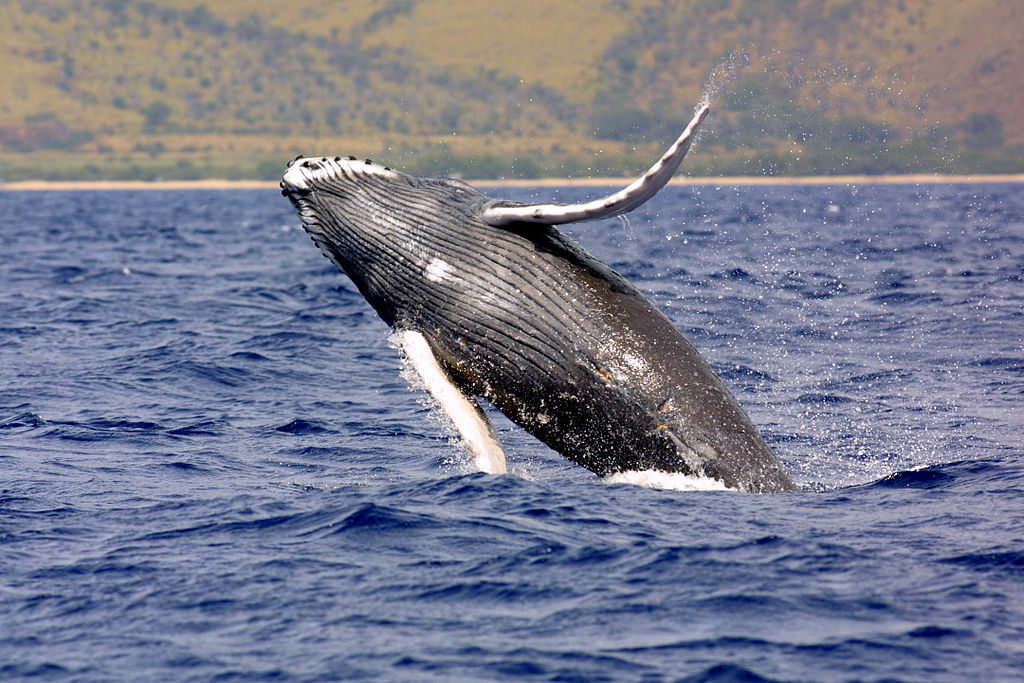
The National Oceanic and Atmospheric Administration is studying whether the Central North Pacific humpback whale should be removed from the endangered species list.
The State of Alaska submitted a petition to remove the whale from the list at the end of February. NOAA announced today it has enough information to warrant further research. This is the second petition NOAA has received to take the endangered status away from humpback whales.
Under the Endangered Species Act, the humpback whale is listed globally as one species.
Julie Speegle, public affairs officer for NOAA Fisheries, Alaska Region, says Central North Pacific humpback whales migrate between Hawaii and Alaska.
Now that NOAA is looking deeper into the state’s petition, the agency will study if these whales are distinct from the rest of the population.
“And if so, then whether or not to keep it listed as it is, endangered, or to down-list it to threatened or to delist it altogether,” Speegle says.
In April 2013, the Hawaii Fishermen’s Alliance for Conservation and Tradition Inc. submitted a petition to take the entire North Pacific humpback population off the endangered species list. NOAA determined it had enough information to warrant further research. In response, the state put in its petition.
Doug Vincent-Lang is director for the state Division of Wildlife Conservation.
“Some of the information is less clear about the recovery of whales in the Western Pacific, including in the Asian area, but we thought the evidence was very clear for the primary Alaska population that occurs in the North Central Pacific area,” Vincent-Lang says.
NOAA scientists estimate there are a minimum of 5,833 humpbacks found in the Central North Pacific area. Whales in the larger North Pacific are numbered at 22,000. About 50 years ago, due to commercial whaling, that figure was less than 1,400.
Vincent-Lang says the state’s petition argues the threat of extinction for the North Pacific humpback whale is gone.
“The primary threat was whaling. Whaling’s been dealt with and it’s now regulated as a species under the Marine Mammal Protection Act, so we think, when that threat of extinction has been removed for the foreseeable future and the threats that led to its listing are gone, it’s time to get that off the list,” he says.
NOAA started an in-depth review of the global population of humpback whales in 2010, prior to both petitions.
Marta Nammack is NOAA’s Endangered Species Act listing coordinator.
“We look at things like abundance, spatial distribution, productivity and diversity just to try get an idea of how the species is doing and we look at threats to see what threats the species might be facing,” Nammack explains.
NOAA is also looking for distinct populations.
“If we can separate populations out because they are different enough from each other, then we can list species by population instead of the entire species,” Mannack says.
NOAA is including both the State of Alaska and the Hawaii Fishermen’s Alliance petitions in the larger status review. The agency has already missed the one year deadline to make a decision on the Hawaii Fishermen’s petition. Nammack says NOAA is working as quickly as possible but doesn’t have an estimate for when decisions will come out.
In 2010, the state petitioned to remove the Eastern Stellar sea lion from the threatened species list, which NOAA did last October.
Previous stories:
Should humpbacks lose endangered status?
NOAA reviewing ESA protections for humpback whales
